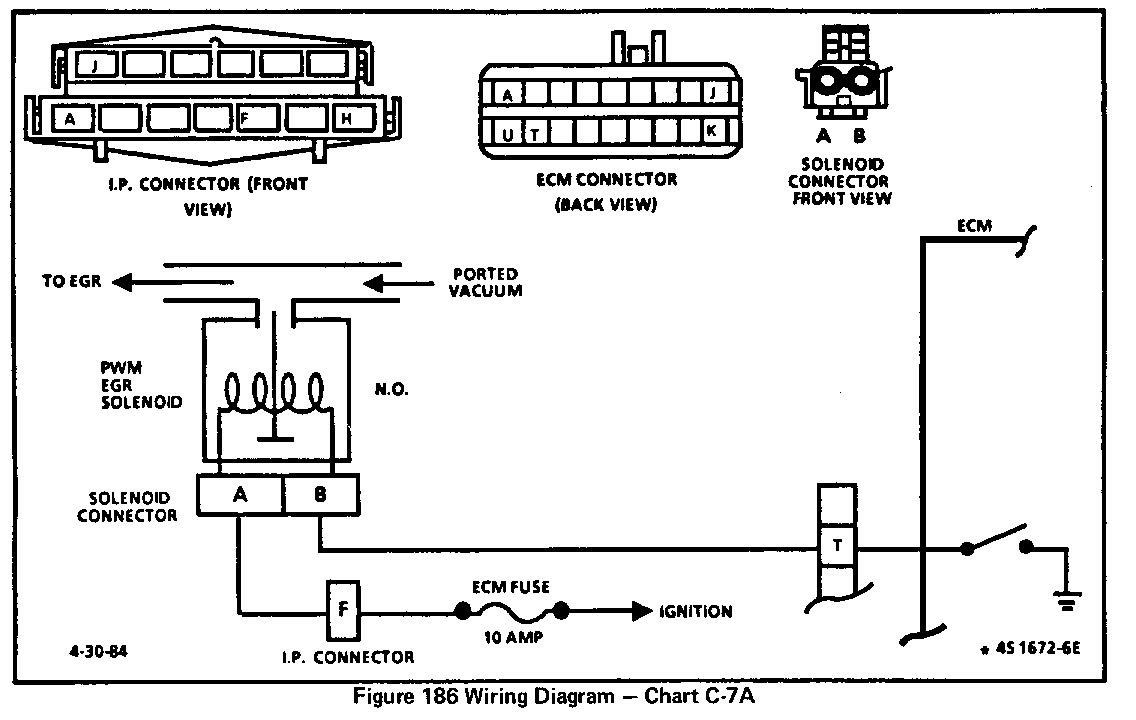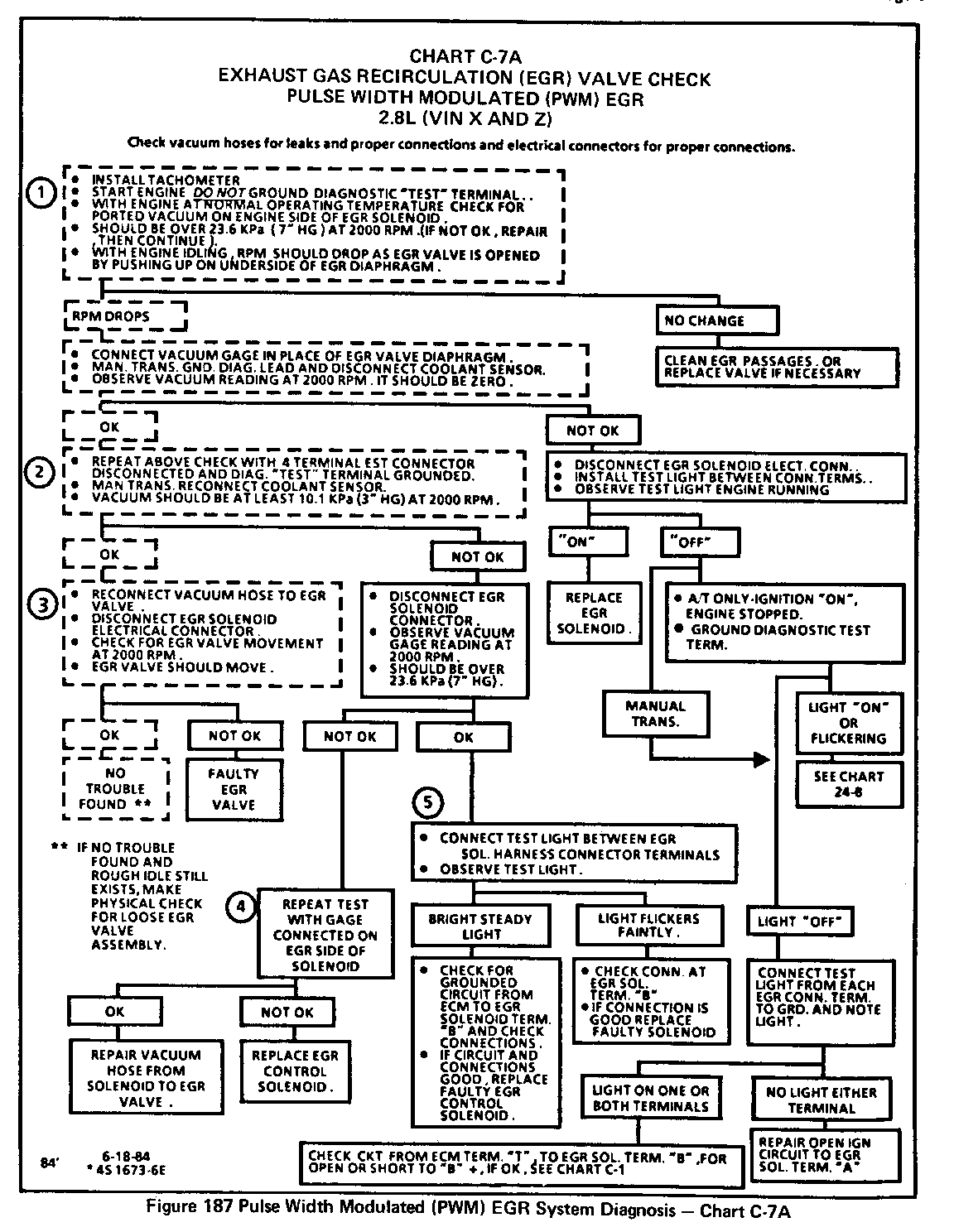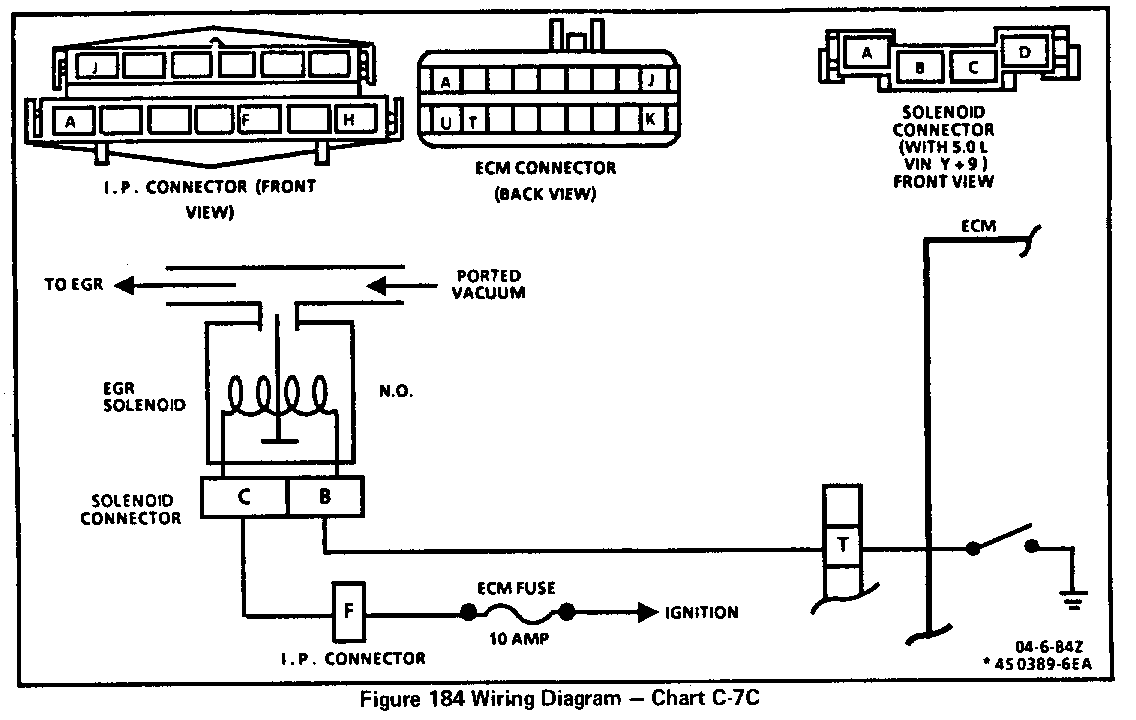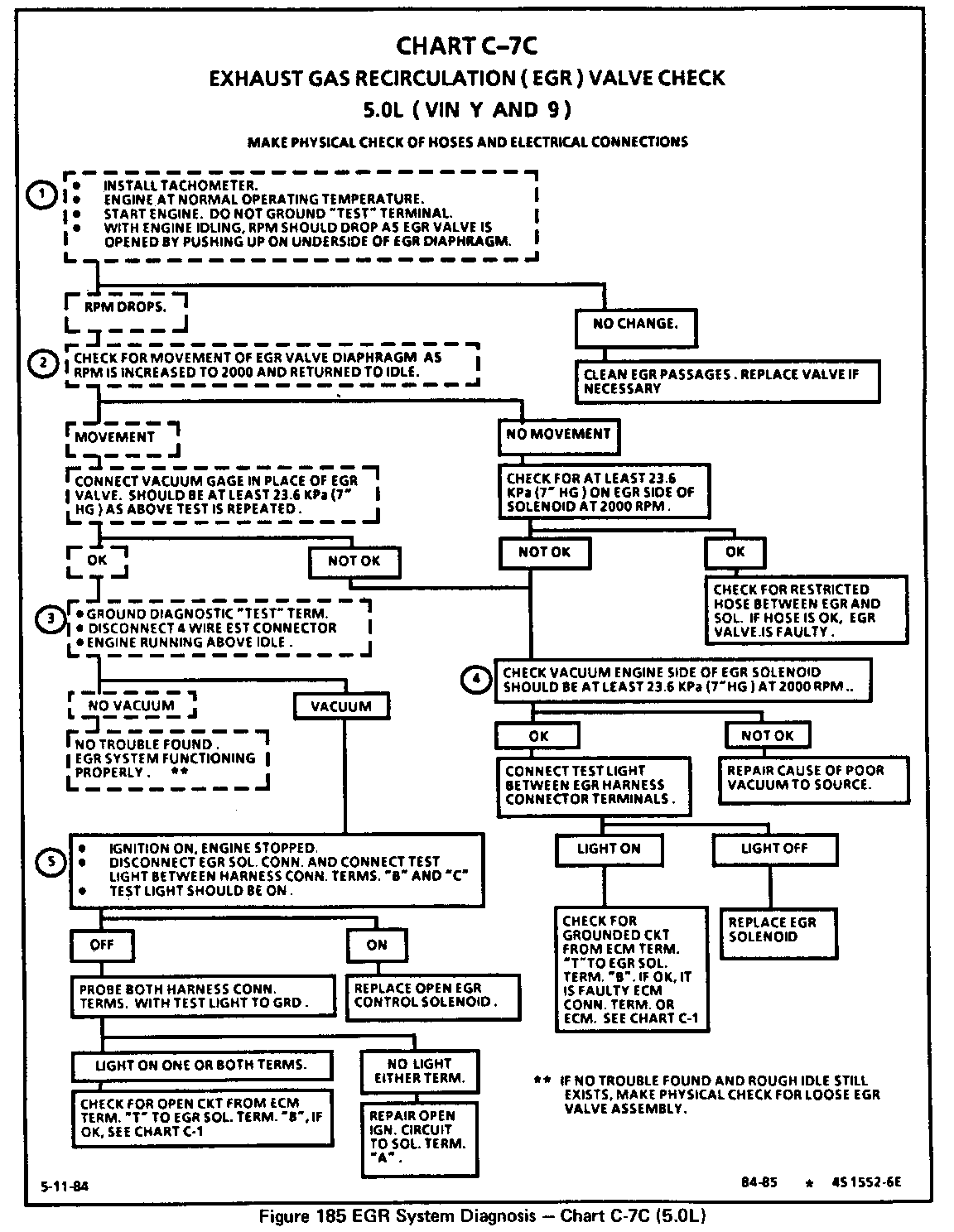PULSE WIDTH MODULATED EGR CHART REVISION

MODELS/YEARS ALL 1984 MODELS
This bulletin contains two charts to be used in the Driveability and Emissions - Carbureted Section of the 1984 Chassis Service Manual.
Chart C-7A replaces the information on pages 6E1-168 and 6E1-169 in the Firenza, Omega and Cutlass Ciera Chassis Service Manual.
Chart C-7C replaces the information on pages 6E 1-164 and 6E 1-165 in the Cutlass Supreme, 88, 98 and Toronado Chassis Service Manual, as the 1984 5.0L engine was not produced with Pulse Width Modulated (PWM) EGR.
Steps 1, 2 and 3 in the dashed boxes in both charts are the steps necessary to perform the EGR system operation check at 30,000 miles or 36 month intervals as noted in the maintenance schedules in Section OB.
CHART C-7A, PULSE WIDTH MODULATED (PWM) EGR 2.8L (VIN X AND Z)
PWM EGR is an ECM control that pulses the vacuum tot he EGR. This is accomplished through a normally open EGR solenoid which when energized by the ECM shuts off the vacuum to the EGR valve diaphragm. This system can pulse the solenoid many times per second (PWM). The EGR solenoid is always energized (EGR off) when any one of the following conditions are met:
Park/Neutral switch closed (selector in park or neutral) Throttle Position greater than specified. Coolant temperature less than specified.
1. Checks to see if the EGR passages are restricted or if the valve is stuck open.
2. With the 4 wire EST connector disconnected, the ECM thinks the engine is not running. Grounding the test terminal, under this condition, causes the ECM to pulse the EGR solenoid "ON" and "OFF" for testing which will result in a controlled vacuum supply to the EGR valve diaphragm at 2000 RPM.
3. By disconnecting EGR solenoid electrical connector, control the ECM is overridden and the normally opened EGR solenoid will pass available vacuum. At 2000 RPM EGR valves should move if EGR control system is functioning properly .
4. If vacuum is below 23.6KPa (7" HG) at 2000 RPM with EGR solenoid electrical connector disconnected, a leak or restriction between test point ( EGR diaphragm ) and source is evident.
5. Checks EGR solenoid electrical control circuit. The test light should "flicker faintly" if the ECM, harness and connections are OK. "Flicker faintly" refers to a slightly pulsing glow as opposed to "bright steady" glow from a continuous ground path.
CHART C-7C, EXHAUST GAS RECIRCULATION 5.0L (VIN Y AND 9) ONLY
The Exhaust Gas Recirculation (EGR) valve is controlled by a normally open solenoid (allows vacuum to pass when de-energized.)
When the ECM energizes the solenoid, by completing a ground circuit, the EGR is turned "OFF". The ECM controls EGR based on the following inputs :
Coolant Temperature Throttle Position Engine RPM TCC State Barometric Pressure
1. This tests for restricted valve or passage in manifold. Engine should run roughly or stall as valve is opened manually.
2. EGR valve diaphragm should begin to move as the engine speed approaches 2000 RPM.
3. This step should result in the EGR solenoid being energized, shutting off vacuum to the EGR valve diaphragm. This indicates EGR system is functioning properly.
Steps 1,2 and 3 represent an EGR system operation check.
4. Vacuum below 23.6KPa (7" HG) at 2000 RPM is insufficient for proper EGR operation. Lower vacuum readings require repair.
5. Disconnecting the four wire EST connector with diagnostic terminal grounded causes ECM to ground CKT from ECM terminal "T" to EGR solenoid terminal "B". The light should be on. ( EGR vacuum off.)




General Motors bulletins are intended for use by professional technicians, not a "do-it-yourselfer". They are written to inform those technicians of conditions that may occur on some vehicles, or to provide information that could assist in the proper service of a vehicle. Properly trained technicians have the equipment, tools, safety instructions and know-how to do a job properly and safely. If a condition is described, do not assume that the bulletin applies to your vehicle, or that your vehicle will have that condition. See a General Motors dealer servicing your brand of General Motors vehicle for information on whether your vehicle may benefit from the information.
